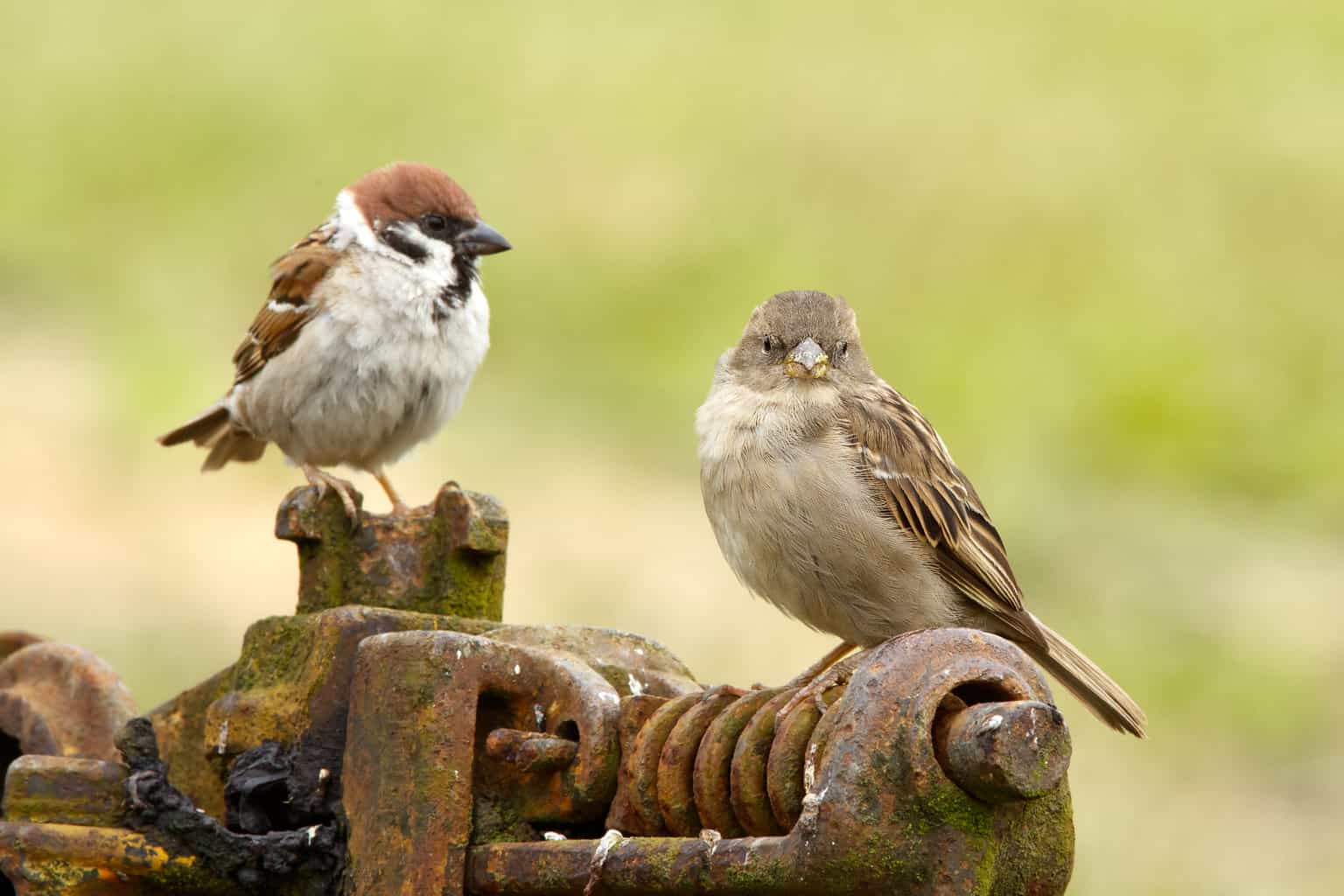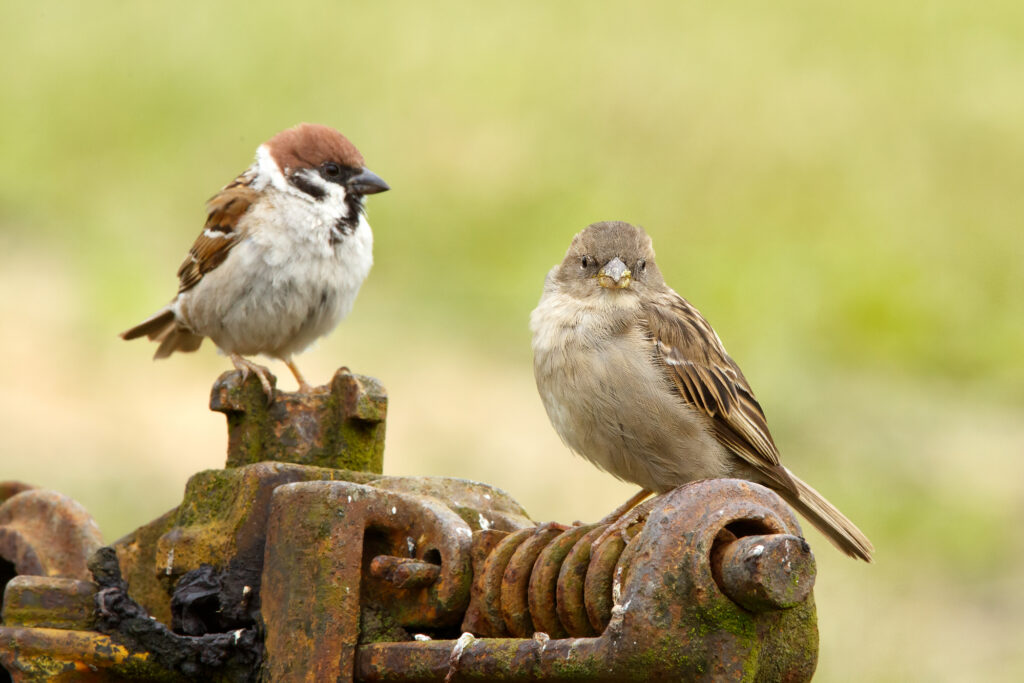If you are a keen birdwatcher, you will want to know all you can about the birds you are watching – including their gender. But telling whether a bird is male or female might not always be as straightforward as you might imagine.
Some species have very clear and distinct visual differences between male and female birds, so it can be very easy to tell the sexes apart. But others are not easy to differentiate without far more expert knowledge or careful observation of behavior.
How can you tell the difference between a male and a female bird?
Telling the difference between males and females in the avian world often takes some detective work and will depend on which species you are looking at.
Sometimes, there are obvious differences in the appearance of birds of a different gender. For example, in many species, the males will have bolder and more distinctive coloration in their plumage. (Breeding plumage can play a role in a male attracting a mate).
Some males have different colored feathers year-round. Others don special plumage only during the breeding season.
In some cases, males and females can also vary dramatically in size. For certain bird species, the females are often larger – sometimes much larger and occasionally even twice the size!
Unfortunately, for those trying to determine whether they are looking at a male or female bird, not all bird species show clear visual distinctions between the genders.
Sometimes, birdwatchers need to go beyond visual clues to determine whether they are looking at a male or a female. This often involves looking at bird behavior – for example, mating or nesting behaviors attributed only to one gender.
Often, by piecing together the ornithological clues, it is possible to work out whether you are looking at a male or female bird.
Sometimes, however, it is not easy to tell without medical testing whether a bird (especially a pet bird outside of its typical habitat and not able to exhibit truly natural behavior) is male or female.
Appearance Differences Between Male and Female Birds
When the males and females of the same species exhibit divergent visual characteristics, this is known as sexual dimorphism. Many bird species exhibit this to varying degrees.

Plumage and Coloration
One easily identified type of sexual dimorphism is plumage dimorphism, where males and females have different ornamentation or coloration.
Males are typically the more colorful or brightly colored gender, as in the obvious case of peacocks and many other common species you might see in your garden. Northern cardinals, duck species, painted buntings, and orioles are just some birds that display clear color differences between male and female birds, with more colorful males.
In most cases, male birds have brighter, bolder colors as a way to attract mates. Female birds tend to be duller in hue, with less distinctive markings. This makes it easier for them to blend into the surroundings while they mind a nest or protect young birds.
However, this is not always the case. Sometimes, males and females have distinctive coloration, patination, or ornamentation, though they look very different.
Sometimes, both sexes have the same plumage pattern, but females can be identified by their paler or more washed-out color – in several sparrow species, for example. This is referred to as sesquimorphism.
In some birds, plumage, pattern, or color differences are much more subtle—for example, the extent of color patches on the face, head, or breast.
Size
Another form of dimorphism is when males and females differ in size. In many cases, the male of the species is larger (as with the common pheasant). But with birds of prey, hummingbirds, and some species of flightless bird, the female is larger, sometimes markedly so.
The iconic bald eagle males and females have the same plumage and general appearance. But this is one species with females and males that distinctly differ in size. As with many larger raptor species, the female is larger than the male.
This size difference can also occur in smaller birds, like songbirds. But unless you see the birds side by side, it is not always easy to see the size difference between the sexes.
Scientists sometimes take morphometric measurements (mass, wing chord, tarsus, and tail) to identify gender in birds like black-capped chickadees. These birds cannot easily be sexed outside the breeding period when females develop a brood patch and males develop a cloacal protuberance. But small differences are not always discernable by the naked eye.
Even when bird species have males and females that are similar in size, the difference between the sexes may be present in features like bill length, crest size, or tail feather length, for example.
Behavioral Differences Between Male and Female Birds
Bird species in which the male and female look the same are called monomorphic. In these species, you cannot tell simply by looking at the birds’ plumage whether they are of one gender or the other.
Some monomorphic species commonly seen in gardens in the US include American crows, blue jays, black-capped chickadees, house wrens, and mourning doves, for example.
With some species, it is not easy for birdwatchers to immediately tell whether they are looking at a male or female bird. But watching behavior can often reveal the gender of a particular individual.
One way to learn whether a migratory bird is male or female is to mark the bird’s arrival. Male birds tend to arrive first to establish territory and defend it before females arrive.
They may often sing to mark their territory, warn off intruders, and attract a mate. (Though females will also sing in some instances). You may observe aggressive behaviors more typically in males as they fight to maintain a territory.
During the breeding season, males may be involved in elaborate courtship displays and offer females food or show off in front of them with elaborate movements or dances.
In some species, both males and females are involved in building nests and sitting on eggs, though in some cases, watching nesting behaviors will reveal which sex you are looking at. Clues to a bird’s gender may also be revealed by watching birds caring for and feeding baby birds. In many cases, both parents are actively involved, though, in some species, this is not the case.
If you want to know whether a bird is male or female, the first step is always to ensure you know which species it is. Once you have that information, you should be able to research how males and females look and behave.
If the birds don’t have noticeable differences in appearance between males and females, it may not always be easy to make a positive gender identification. In some cases, you might not be able to tell at all.
However, identifying the species and learning more about the males and females of that species, their appearance, and behavior should help you to hone and develop your knowledge of the birds that share your space. So it can be a very positive thing even if you cannot always reach a firm conclusion.

